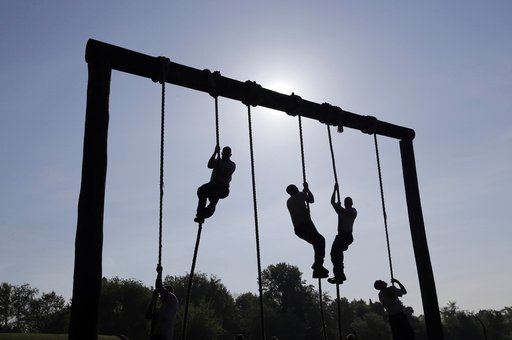The Navy is set to reach its target of enlisting 40,600 recruits by the end of September with the aid of new recruiting initiatives. Navy Vice Adm. Rick Cheeseman mentioned that due to the last-minute rush of enlistments, there will be a shortfall of approximately 5,000 sailors who won’t be able to undertake boot camp at Great Lakes, Illinois within the current fiscal year. Consequently, many recruits, although having signed initial contracts, are still months away from commencing boot camp or joining the fleet.
For two consecutive years now, the Navy has been unable to achieve its complete recruitment objective. This shortfall is impacting the Navy’s capacity to adequately staff its warships, with about 22,000 sailors needed to fill positions on ships, a large portion of which, approximately 20,000, are in junior ranks.
Recruitment challenges have been faced by all military branches in recent years due to a competitive job market. Struggles persist in finding individuals who meet the stringent physical, mental, and moral standards mandated by the military, which includes restrictions on drug use and criminal records.
The Navy, along with the Army and Air Force, fell short of their recruitment goals last year, with the Navy missing its target by around 6,000 recruits. The Marine Corps and Space Force have consistently met their recruitment goals. This year, all branches except the Navy are projected to meet their targets without having to resort to drastic measures such as accepting recruits with very low test scores.
The recent surge in Navy recruitment has instilled confidence in Cheeseman and other Navy leadership, indicating that the strategic changes implemented to boost recruitment are starting to yield positive results. Cheeseman anticipates achieving full success in the upcoming year.
One significant modification in recruiting tactics was the Navy’s decision, starting in December 2022, to broaden its pool of applicants by targeting young adults with low test scores and accepting recruits without high school diplomas or GEDs – an unconventional step compared to other services. This move was made in order to fill physically demanding job roles within the Navy.
Despite concerns about potential challenges associated with admitting lower-scoring recruits, the Navy has seen success in attracting individuals without diplomas as long as they score above 50 on the aptitude test.
Another noteworthy change was the introduction of a new Future Sailor Preparatory Course, similar to one established by the Army, aimed at helping recruits struggling academically or physically. Since its launch in April 2023, approximately 2,900 sailors have participated in the academic course, with 1,850 completing it, and 300 going through the physical fitness course.
Cheeseman remains optimistic for the future, expressing confidence in the Navy’s ability to handle the recruitment mission more effectively moving forward. He commended the efforts of Navy recruiters and assured readiness to meet the enlistment target of 40,600 for the upcoming year.
